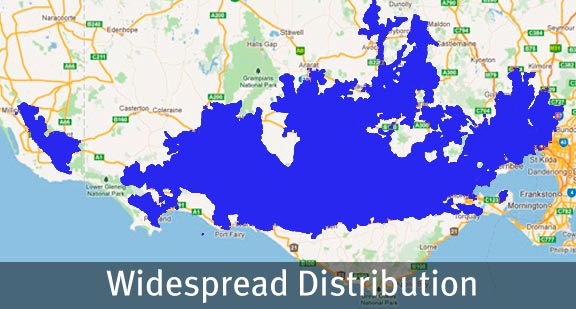A range of teacher professional learning programs will be developed to accompany the Biodiversity of the Western Volcanic Plains online outreach...

Feral Cat
Felis catus
Some cats are urban strays surviving mainly on human refuse. Others are feral animals which survive by eating native animals. Usually solitary and nocturnal, spending most of the day sheltering in a hollow log, rock pile or an old burrow. Rabbits have helped the spread of feral cats by providing food and burrows for shelter. Feral cats breed from the age of about one year in any season. They can have up to 2 litters of about four kittens each year. Feral cats are prey for foxes, dingoes and wedge-tailed eagles.
| Details | Description |
| Type | Mammal |
| Group | Placental |
| Identifying Characteristics | |
| Distinctive Markings | Often stripes, dots, lines or patterns on fur. |
| Diet | Carnivore. Small mammals including young rabbits and bandicoots. Birds, especially ground-nesting or ground-dwelling birds, including eggs and hatchlings, small reptiles, frogs and invertebrates. |
| Habitat | Most areas, except wetlands. |
| Native Status | Introduced |
| Taxonomy | |
| Phylum | Chordata |
| Class | Mammalia |
| Order | Carnivora |
| Family | Felidae |
| Genus | Felis |
| Species | catus |

Distribution maps indicate current and historic locations where species have been sighted.
Source: Atlas of Living Australia
| Conservation Status | |
| DEPI Advisory List | Not listed |
| FFG Act | Not listed |
| EPBC Act | Not listed |
The conservation status of species is listed within Victoria and Australia.
The Department of Environment and Primary Industry (DEPI) Advisory List consists of non-statutory advisory lists of rare or threatened flora and fauna within Victoria.
The Flora and Fauna Guarantee Act 1988 (FFG Act) lists threatened species in Victoria. Under the Act, an Action Statement is produced for each listed species.
The Environment Protection and Biodiversity Conservation Act 1999 (EPBC Act) is the Australian Government’s key piece of environmental legislation, listing nationally threatened native species and ecological communities.



